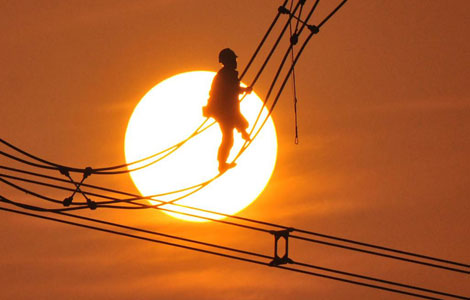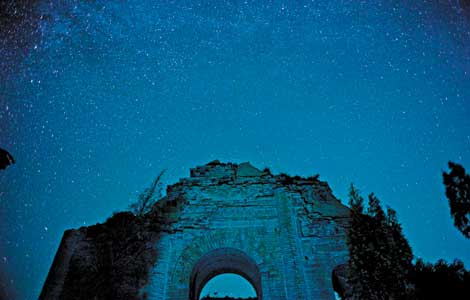Premier Chinese art students make US debut
Updated: 2013-10-08 10:26
By Caroline Berg in New York (China Daily)
|
||||||||
Imagine having a pen pal who is an up-and-coming artist in China. What would you ask?
Students at Philadelphia-based Drexel University have this opportunity, with the arrival of a contemporary art exhibition featuring work by top graduates of China's premiere art academy.
"I have assigned my art history students to go to the show, choose one or two student artists and then communicate with them by e-mail and write a critical paper," Joseph Gregory, head of the university's department of art and art history at Antoinette Westphal College of Media Arts & Design, told China Daily. "I want that dialogue with students in Beijing. It's mind-expanding on both sides."
Drexel is the only American venue to show this exhibition, The Start of a Long Journey, which features artwork from 24 of the most talented graduating seniors from Beijing-based China Central Academy of Fine Arts (CAFA). The exhibition is free and open to the public, and will be on display at the Leonard Pearlstein Gallery in the URBN Center Annex on 3401 Filbert St through Nov 22.
"CAFA is the Harvard of art schools in China," Gregory said. "They already have business relationships with every great school in America, so we're glad to be added to the list."
An opening reception for the exhibition was held last Friday, during which Gregory signed a memorandum of understanding with Wang Min, dean of CAFA's School of Design, and Wang Huangsheng, director of the CAFA Art Museum, to facilitate future faculty and student exchanges between the two institutions.
"We're in a getting acquainted period," Gregory said. "But [this partnership] is definitely something we want to do."
In 2012, Gregory arranged an exchange of exhibitions between the CAFA Art Museum and Drexel's Pearlstein Gallery. Nine faculty artists from Westphal College went to Beijing in September to install their artwork at the CAFA Art Museum. Three weeks ago, Gregory took four of Drexel's art historians to CAFA to give lectures, with the understanding that the Chinese school would return the favor to Drexel.
"We decided to make it fair and facilitate the agreement that we will pay all of our costs and they will pay all of their costs [in these exchanges]," Gregory said. "This was very amenable to them."
Gregory said the immediate idea was to build upon these exchanges. For faculty, this may include workshops, lectures and seminars. For students, it may consist of a semester abroad or obtaining a dual-degree from both institutions.
"That's down the road," Gregory said. "It's not going to happen immediately because you have to figure out what the courses really are and how they match up with what you're doing."
As for the exhibition on display now at Drexel, Gregory said two things stand out to him.
"First, the level of talent of the individuals - their work as student work is enormously, very unusually, accomplished," he said.
CAFA is excruciatingly selective. In 2012, the school accepted 1 percent of its applicants; that is, 900 out of 90,000. The even more exclusive Long Journey exhibition for just graduated seniors has been held annually in China for the past five years, and attracts collectors and gallery owners from around the world.
"Secondly, the diversity of it [stands out]," Gregory said. "You can see that China's cultural opening over the past 15 years, their art world has burgeoned because of the increasing globalization of art instruction and artistic thinking there."
The paintings, prints, sculptures and video installations curated for the show are critical assessments of the previous era of Chinese art, which was influenced by the intellectual trends during the Cold War period and also traditional Chinese wisdom, CAFA provided in a press statement.
Some examples include a sculpture of books and texts by Wu Wer called Adding and Subtracting; a multi-dimensional work combining gouache paper, pencil drawings and video by Ye Qiuyang called The Landscape in Mist, Fibonacci Mountain; and a series of digital print-making, acrylic and laser-cutting works by Zhang Yifan called Elephant.
"[The students] are in a unique historical position of having an ancient tradition of art that is being intermixed with contemporary global trends in art, and it's a difficult sort of amalgamation of things," Gregory said. "They really do it brilliantly."
carolineberg@chinadailyusa.com
(China Daily USA 10/08/2013 page2)
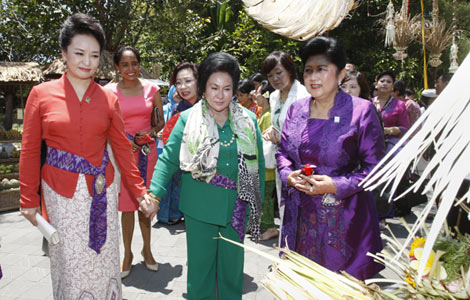
 Firming friendships
Firming friendships
 A smog-filled Beijing targets polluting cars
A smog-filled Beijing targets polluting cars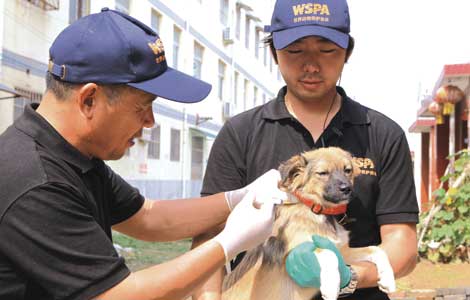
 Animal welfare to be added in training
Animal welfare to be added in training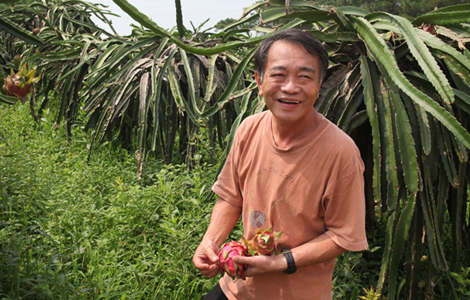
 Chasing the dragons
Chasing the dragons
 Boehner: US on path to default if Obama won't negotiate
Boehner: US on path to default if Obama won't negotiate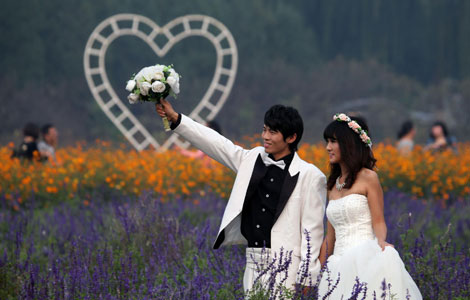
 New couples take wedding photos during holiday
New couples take wedding photos during holiday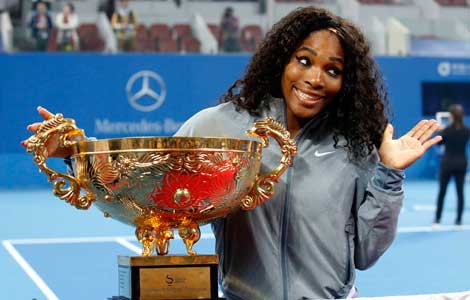
 Williams beats Jankovic to win second China Open title
Williams beats Jankovic to win second China Open title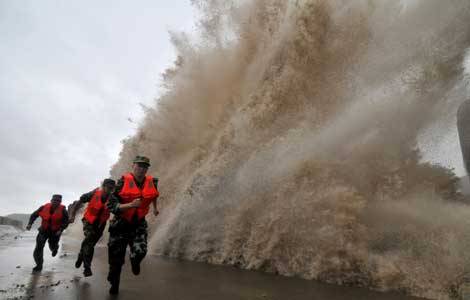
 Red alerts as Fitow closes in
Red alerts as Fitow closes in
Most Viewed
Editor's Picks
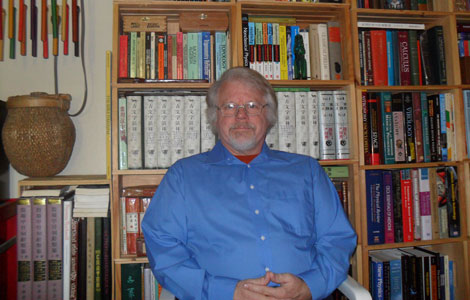
|

|
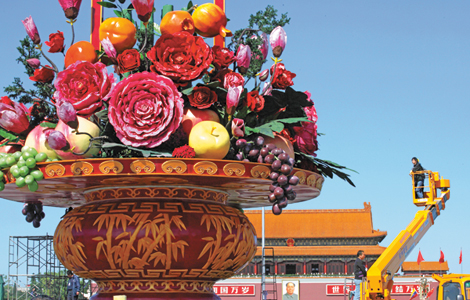
|

|

|

|
Today's Top News
Japan, US start joint military drill
Kerry hails weapons destruction
Robust home sales during holiday
China calls on the United States to stay solvent
SF Chinatown honored
'E. Asia will lead global growth'
Beijing targets polluting cars
APEC 'should take lead' in FTA talks
US Weekly

|

|


